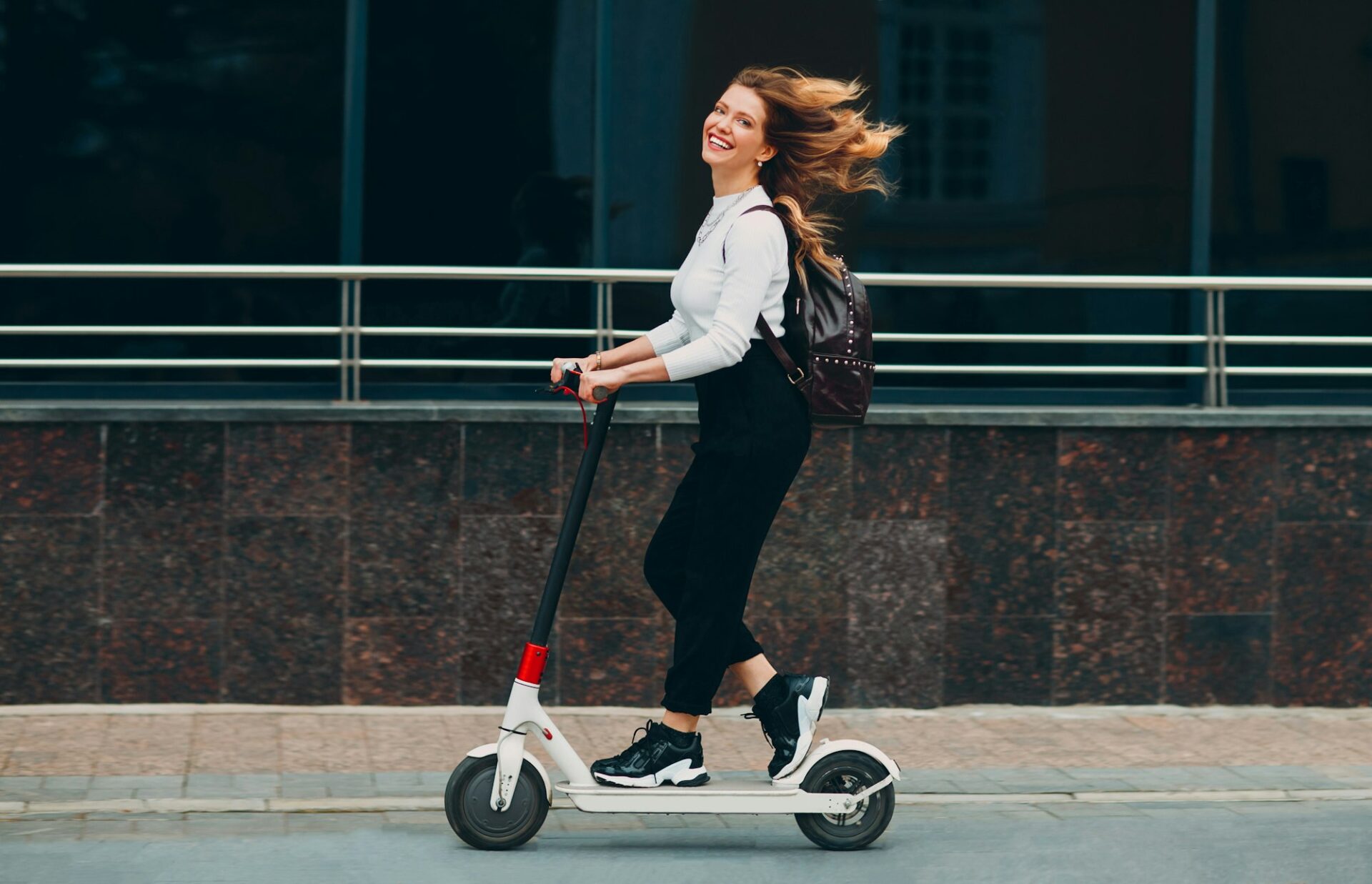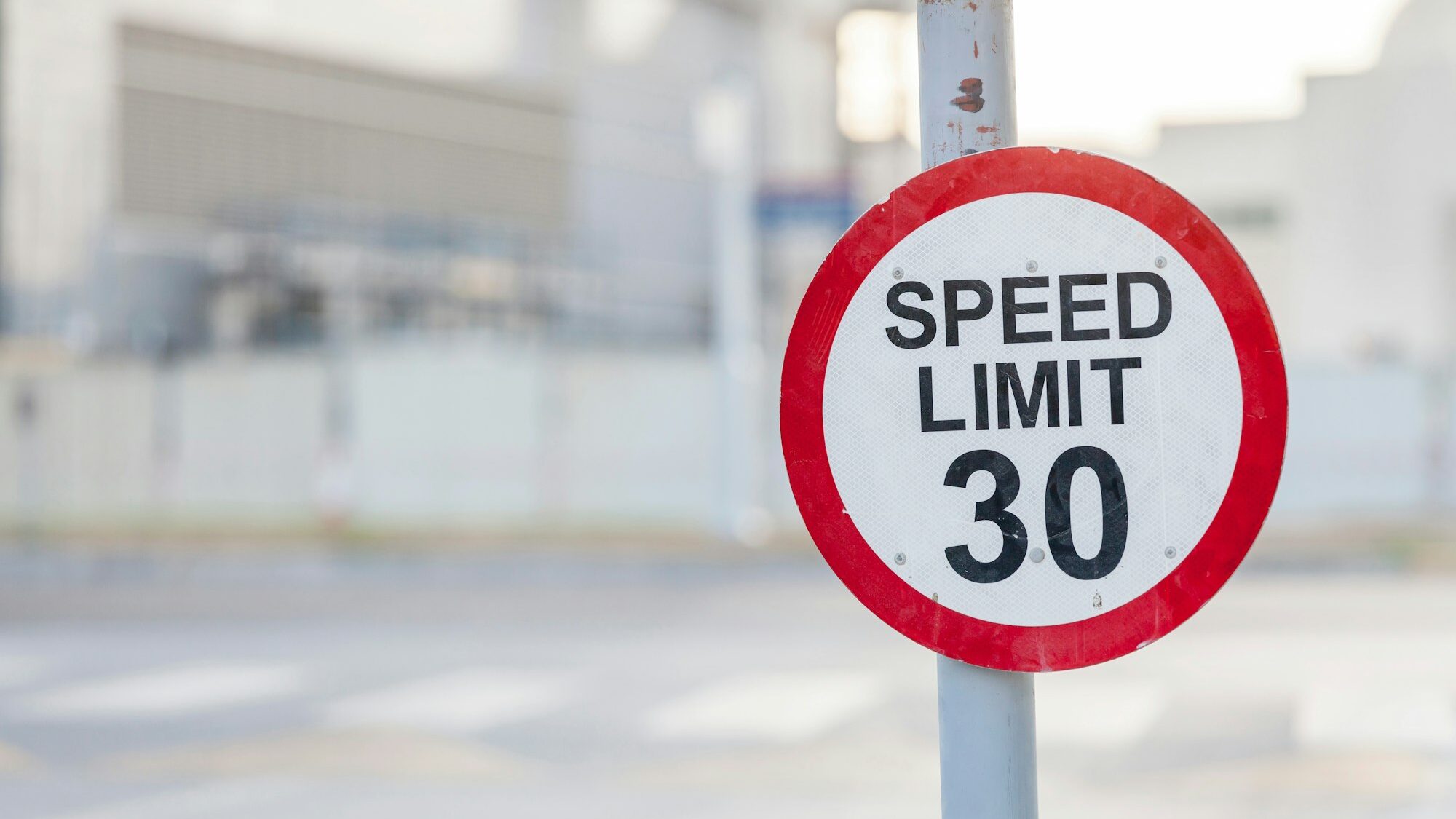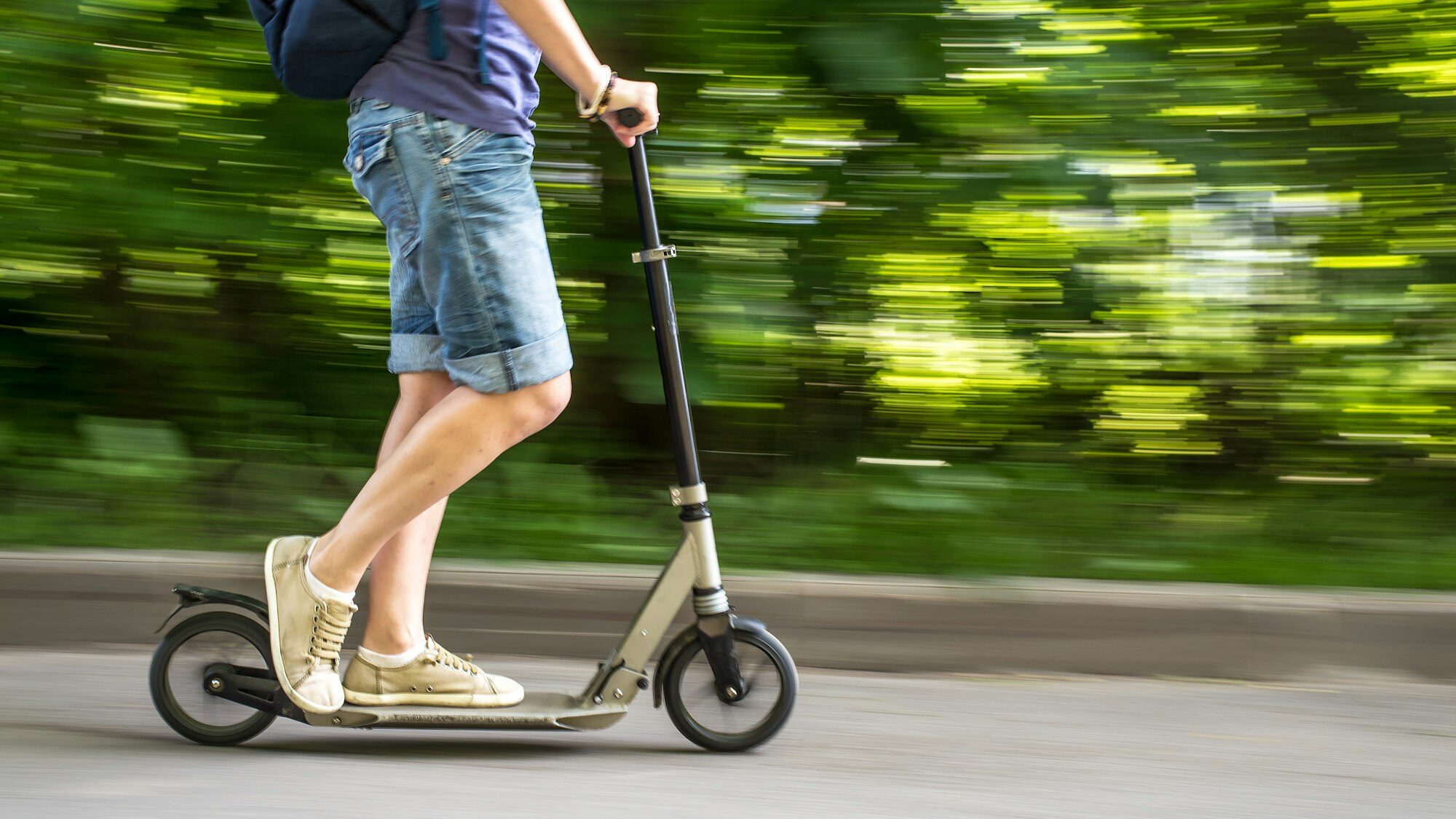Ever wondered just how fast electric scooters can go? Whether you’re a commuter looking for efficiency or an enthusiast craving speed, understanding the capabilities and regulations of e-scooters is essential. With an array of models on the market, each boasting different speeds, it’s crucial to know what to expect from your ride.
In this comprehensive guide, we’ll delve into the average speed of electric scooters, unveil the fastest scooter on the market, and explain the legal speed limits across various regions. We’ll also explore the key factors that influence e-scooter speeds and provide tips on how to safely increase your scooter’s velocity. So, buckle up as we embark on this speedy journey to uncover all there is to know about e-scooter speeds!

What Is the Average Speed of Electric Scooters?
The average speed of scooters is generally between 15 and 20 miles per hour (mph). This range makes them suitable for urban commuting and short-distance travel. Several factors contribute to this average, including motor power, battery capacity, and overall design.
Common E-Scooter Models and Their Speeds
- Entry-Level Models: Many basic models have top speeds of around 10 to 15 mph. These scooters are perfect for beginners and children.
- Commuter Models: Designed for daily commuting, these scooters reach average speeds of 15 to 20 mph, striking a balance between speed and safety.
- High-Performance Models: These scooters can exceed speeds of 25 mph, catering to those needing quicker transit options.
Comparing Speed Across Brands
Different brands offer varying speeds for their scooters. For example:
- Xiaomi Mi: Typically reaches up to 15.5 mph, ideal for city commutes.
- Segway Ninebot: Offers models that range from 12 mph to 18.6 mph.
- Razor: Known for beginner-friendly models averaging around 10 mph.
Impact of Rider Weight and Terrain
It’s important to note that the rider’s weight and the terrain hugely influence an e-scooter’s speed. Heavier riders or hilly terrains can significantly reduce the maximum achievable speed.
In conclusion, the average speed of scooters plays a crucial role in determining their suitability for various use cases. Understanding these averages helps you select the right model for your needs, whether for daily commuting or recreational purposes. Next, we’ll explore the top speeds achieved by high-performance scooters.

Top Speeds Achieved by High-Performance Electric Scooters
For those who crave speed and performance, high-performance electric scooters offer impressive top speeds that can rival even some motorcycles. These scooters are designed with powerful motors and advanced battery systems to achieve remarkable velocities.
Leading High-Speed Electric Scooters
- Dualtron X2: One of the fastest scooters on the market, the Dualtron X2 can reach speeds up to 60 mph.
- NAMI Burn-e Viper: Another top contender, this scooter boasts a top speed of around 50 mph, making it a favorite among speed enthusiasts.
- Rion RE90: Known for its lightweight and aerodynamic design, this scooter can achieve speeds close to 80 mph under optimal conditions.
Speed Comparison of Electric Scooters
When comparing speeds across different models, it’s essential to consider the intended use and terrain. High-performance models are often designed for off-road or performance settings, unlike average commuter e-scooters. Here’s a quick comparison:
- City Commuters: Typically have top speeds of 15-25 mph.
- Off-Road and Performance Models: These can reach 40-60 mph speeds.
- Racing Models: Specially designed for speed, these can push past 70 mph.
Safety Considerations at High Speeds
While high-speed e-scooters offer an exhilarating ride, they require enhanced safety measures. Riders should wear appropriate safety gear, including helmets, gloves, and protective clothing. Additionally, ensure that the scooter is well-maintained, with functioning brakes and lights, before attempting high-speed rides.
High-performance scooters deliver impressive top speeds, but safety and appropriate usage are paramount. Now that we’ve explored the fast lane let’s look at the legal speed limits for scooters in different regions.

Legal Speed Limits for Electric Scooters by Region
Legal speed limits for scooters vary widely depending on the country and even within different states or cities. Understanding these regulations is crucial for ensuring compliance and safe riding. Here, we break down some of the key speed limits across various regions.
United States
- California: The maximum speed limit for e-scooters is 15 mph on public roads.
- New York: Electric scooters are restricted to a top speed of 20 mph.
- Texas: Riders can go up to 15 mph, but speed limits can vary by city ordinances.
Europe
- United Kingdom: E-scooters are legally limited to 15.5 mph on public roads.
- Germany: The top speed allowed is 12.4 mph, with scooters requiring insurance and registration.
- France: Max speed limits for e-scooters are capped at 15.5 mph, and riding on sidewalks is prohibited.
Asia
- China: Speed limits vary, but a common restriction is around 15 mph for urban areas.
- Japan: E-scooters can reach up to 15 mph; however, they must comply with a range of safety regulations.
- Singapore: The legal speed limit is 15 mph on shared paths and 6 mph on footpaths.
Australia
- Queensland: E-scooters are allowed up to 15 mph on certain public paths.
- New South Wales: Restrictions generally cap speeds at 10 mph, and e-scooters are currently under trial regulations.
Special Considerations
It’s crucial to note that while these speed limits provide a general guideline, they may vary based on local laws. Riders should always check specific regional regulations before using their scooters.
In summary, legal speed limits for road scooters are designed to ensure the safety of riders and pedestrians. Adhering to these regulations is essential for lawful and secure riding. Next, we’ll explore the factors that affect scooter speed.

Factors That Affect Electric Scooter Speeds
Several factors influence the maximum speed that an electric scooter can achieve. Understanding these factors can help you make informed decisions when selecting a scooter and also assist in maintaining optimal performance.
Battery Capacity
The capacity of the scooter’s battery life plays a significant role in determining its speed. Higher-capacity batteries can supply more power to the motor, enabling higher speeds and extended ride times. Conversely, a low battery can reduce the scooter’s top speed and affect overall performance.
Motor Power
Electric scooters come with motors of varying power ratings, typically measured in watts (W). More powerful motors provide greater acceleration and higher top speeds. For example:
- 250W Motors: Suitable for basic models with 15-18 mph speeds.
- 500W Motors: Ideal for mid-range models that can reach 20-25 mph.
- 1000W and Higher: Found in high-performance models, reaching speeds above 40 mph.
Rider Weight
The weight of the rider also affects the scooter’s speed. Heavier riders put more strain on the motor, potentially reducing the top speed. Most manufacturers specify a maximum rider weight to ensure optimal performance.
Terrain and Road Conditions
The type of terrain and road conditions can significantly impact speed. Smooth, flat surfaces allow for higher speeds, while rough terrains or inclines can slow the scooter down. Off-road models are designed to handle tougher terrains but may have varying speeds based on surface conditions.
Tire Type and Pressure
Different types of tires (solid, pneumatic) and tire pressure levels affect the scooter’s grip and speed. Properly inflated tires reduce rolling resistance, enabling higher speeds. Regular maintenance of tire pressure is essential for maintaining speed and safety.
Aerodynamics
The scooter’s design and aerodynamics impact its speed. Sleeker, more aerodynamic designs reduce air resistance, allowing the scooter to achieve higher speeds more efficiently. The rider’s posture can also influence aerodynamics and speed.
Environmental Factors
- Temperature: Extreme temperatures can affect battery performance and, consequently, speed.
- Wind: Headwinds can slow you down, while tailwinds might boost speed.
By considering these factors, you can optimize your scooter’s performance and better understand its capabilities. Up next, we’ll discuss how to safely increase the speed of your e-scooter.

How to Safely Increase the Speed of Your E-Scooter
If you’re looking to increase the speed of your scooter, there are several ways to do so. However, it’s important to prioritize safety and adhere to legal regulations. Here are some effective and safe methods.
Upgrade the Battery
- Higher Capacity Battery: Switching to a battery with higher capacity can provide more power to the motor, enabling higher speeds.
- Voltage Increase: Upgrading to a higher voltage battery can also boost the scooter’s top speed. Ensure that your motor and controller are compatible with the new battery voltage.
Improve the Motor
Installing a more powerful motor is another effective way to increase speed. Here are some considerations:
- Higher Wattage Motor: Replacing the existing motor with a higher wattage one can provide additional power for greater speeds.
- Dual Motors: Some high-speed scooters use dual motor setups to double the power and speed capabilities.
Optimize the Controller
The controller manages the power distribution from the battery to the motor. Upgrading or re-programming the controller can lead to performance improvements:
- Performance Controllers: Choose a controller designed to handle higher power outputs, ensuring smooth power delivery and higher speeds.
- Programming: Some controllers allow for firmware updates or re-programming to enhance performance. Check the manufacturer’s guidelines before making adjustments.
Maintain Adequate Tire Pressure
Properly inflated tires reduce rolling resistance, making it easier for the scooter to achieve higher speeds. Check and maintain tire pressure regularly according to the manufacturer’s specifications.
Streamline and Reduce Weight
Reducing the overall weight of the scooter and rider can enhance speed:
- Lightweight Materials: Replace heavy components with lighter alternatives where possible.
- Rider Weight: Carry only essential items to minimize additional weight.
Follow Legal and Safety Guidelines
Increasing the speed of your e-scooter should not compromise safety. Always wear proper safety gear, including helmets, gloves, and pads. Additionally, be aware of local electric scooter laws and speed regulations, and do not exceed legal speed limits.
By considering these methods, you can safely increase the performance and speed of your scooter. However, always prioritize safety and compliance with local laws. In the concluding section, we will summarize the key points and provide final thoughts on optimizing e-scooter speeds.
Conclusion: How Fast Can E Scooters Go?
Electric scooters offer a versatile and exciting mode of transportation with speeds suitable for a variety of uses, from daily commutes to high-speed thrills. When asking about the speed of e-scooters, several factors, including model types, regional regulations, and key performance attributes, must be considered.
Key Takeaways
- Average Speed: Most commuter scooters average speeds between 15 to 20 mph.
- High-Performance Models: Top-of-the-line scooters can achieve impressive speeds, some reaching up to 60 mph.
- Legal Regulations: Speed limits for e-scooters vary by region, generally ranging from 10 to 20 mph. Always adhere to local laws to ensure safe and legal riding.
- Influencing Factors: Battery capacity, motor power, rider weight, and terrain all play critical roles in determining e-scooter speeds and a smooth ride.
- Speed Enhancements: For those looking to increase speed, upgrades in battery, motor, and controller are viable options. Always prioritize safety and adhere to manufacturer guidelines.
Final Considerations
Understanding your scooter’s speed capabilities and legal constraints allows you to make informed choices that fit your needs. Whether you’re seeking efficient daily transportation or a high-speed adventure, there’s an e-scooter tailored to meet your expectations.
Remember, while pushing the limits on speed is tempting, safety should always come first. Equip yourself with the proper safety gear, maintain your scooter in optimal condition, and stay updated on local speed regulations.
With this comprehensive guide, you can now answer the question, “How fast can e scooters go?” Enjoy the ride!